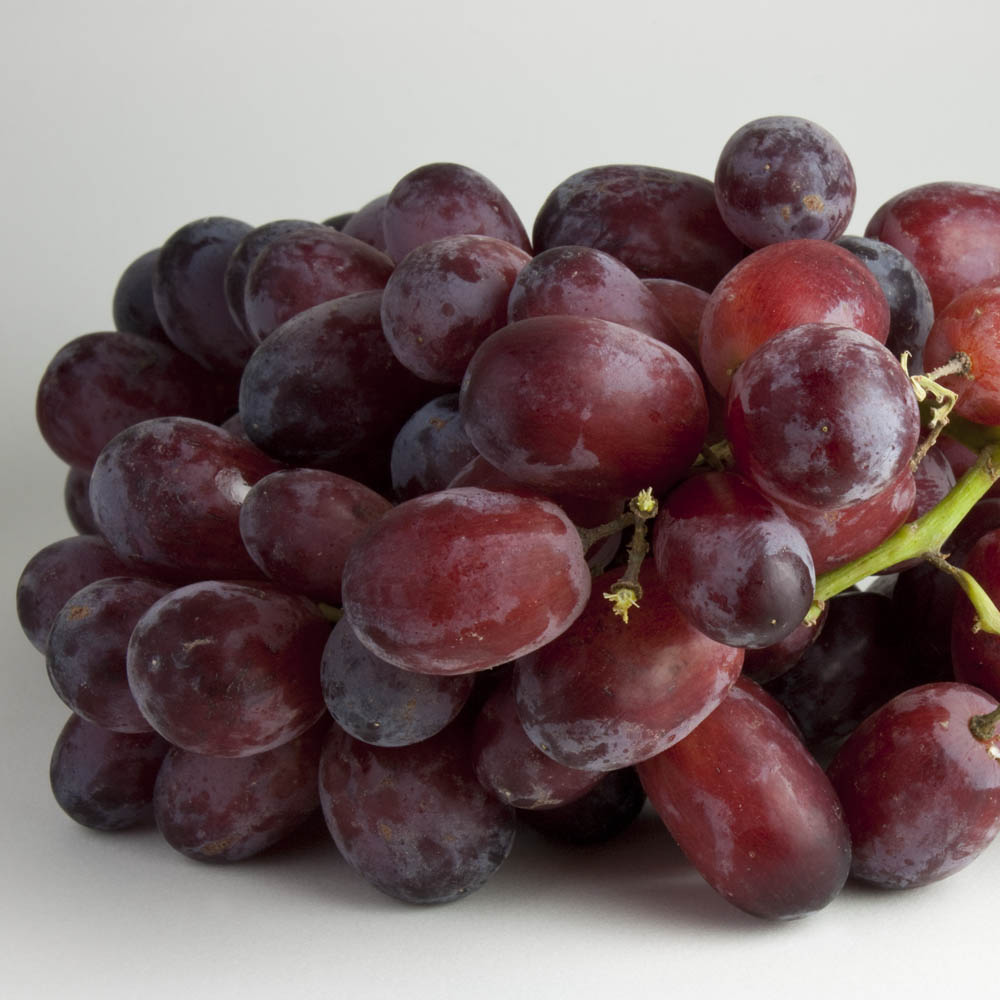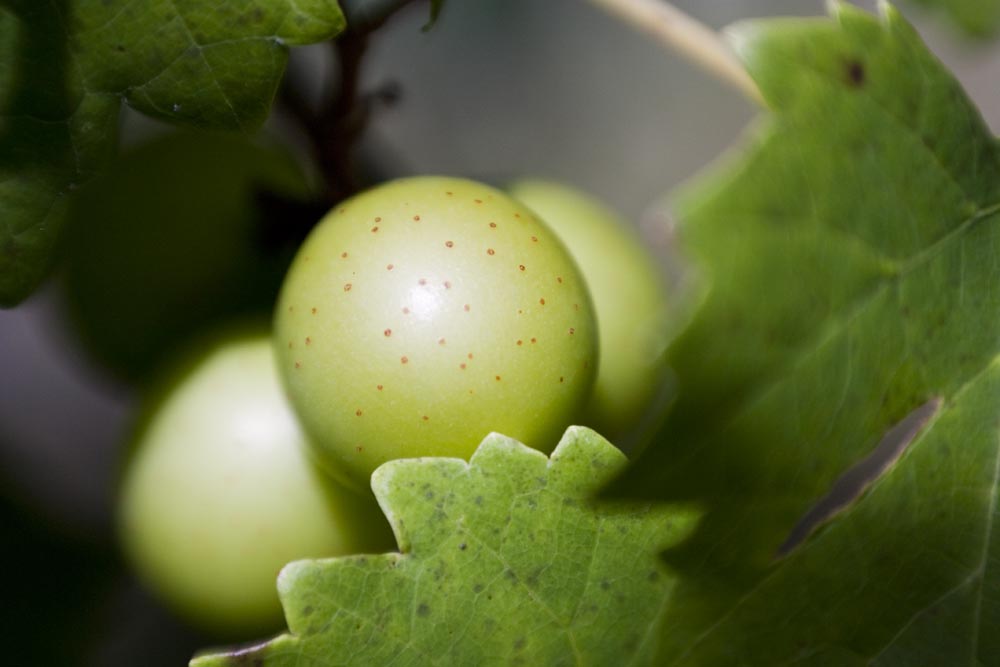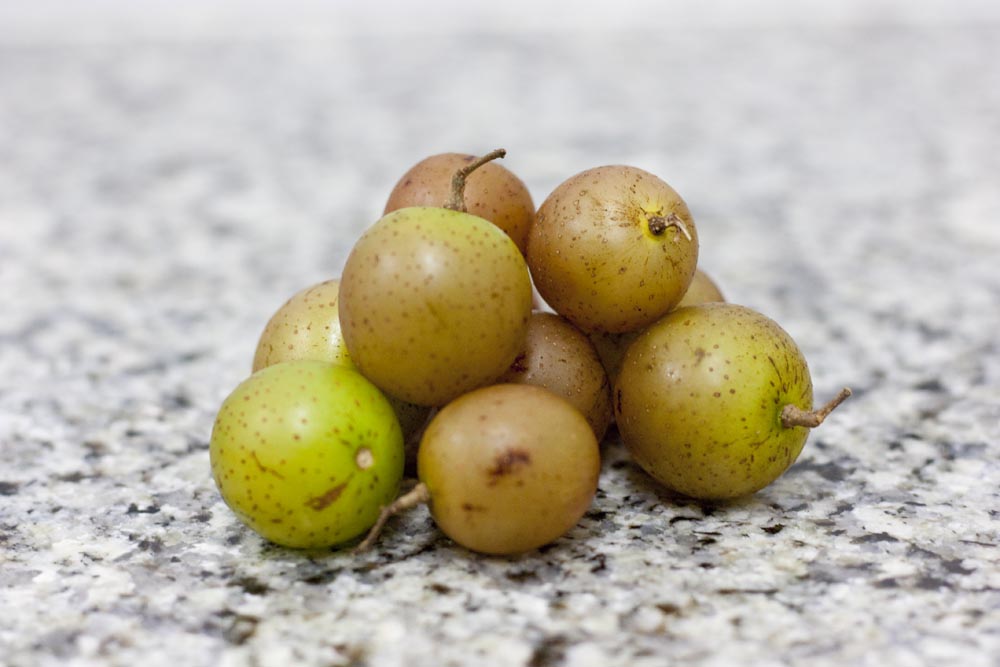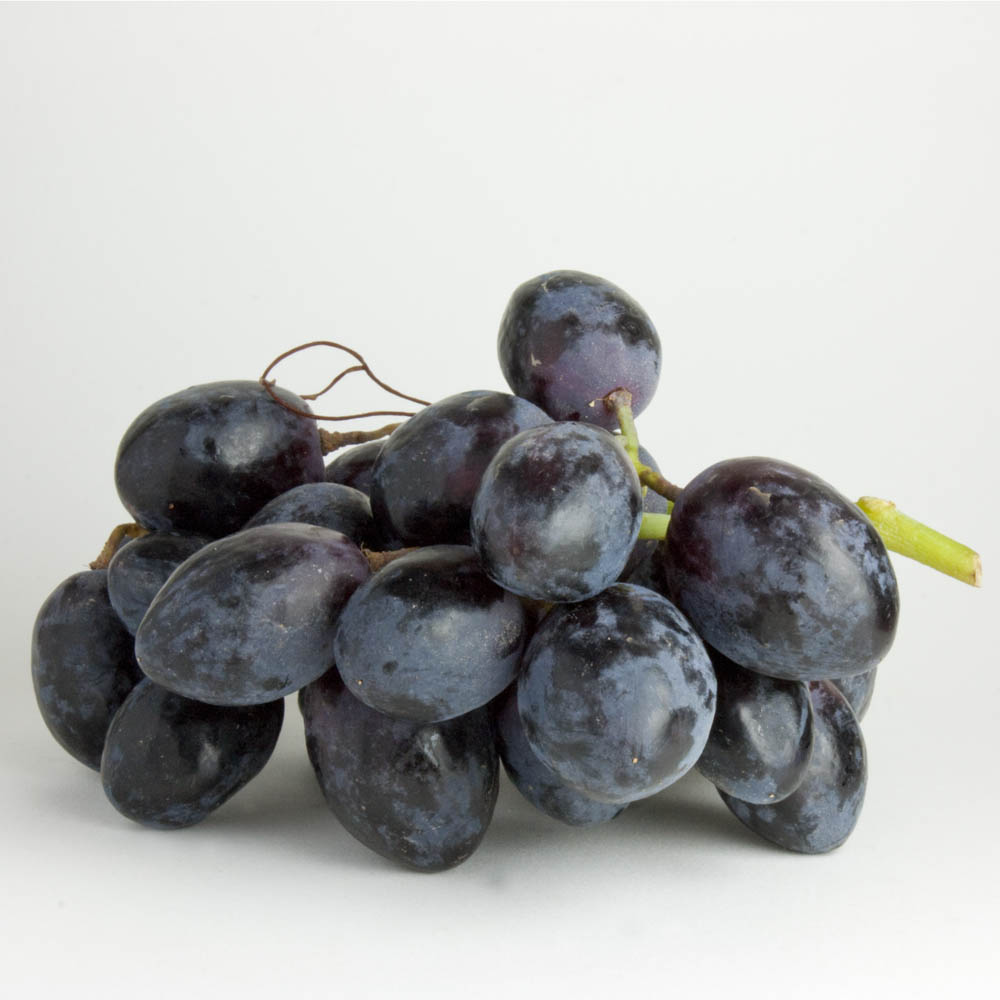Grapes are a type of berry that have been cultivated for at least 8,000 years. A woody deciduous(meaning they drop their leaves during winter) vine, grapes are in the genus vitus. There are two main lineages of grapes, one native to the Mediterranean and Central Asia and the other native to North America. The leaves, fruit and seeds are all edible and highly nutritious.
Most grapes are dark skinned. Colors range from red through purple and dark blue to black. Gene mutations can turn of anthocyanin production, producing white grapes, which are actually green in color. Wines are produced mostly from Old World grape varieties, but some American varieties are also used for wine. American varieties of grapes are used for most juices and jams. Raisins, sultanas and currants are also made by dehydrating different varieties of grapes.
Dark skinned grapes contain one of the widest arrays of phytonutrients available in a single whole food. These phytonutrients include stilbenes, flavanols, flavonols, phenolic acids and carotenoids. The stilbene resveratrol has received the most mainstream press recently for its anti-aging effect, apparently acting in the same fashion as caloric restriction and so extending lifespan. Viniferones are flavanols unique to grapes. Quercetin is the best known of several flavonols. Carotenoids present in grapes include beta-carotene, lutein and zeaxanthin. Melatonin and anti-bacterial oligopeptides are also part of the package. This all adds up to a powerful antioxidant, anti-inflammatory, immune boosting and blood sugar regulating addition to any healthy whole food diet.
Grapes are one of the foods that are worth buying organic. Most non-organic grapes have detectable pesticide residues on them. Organic grapes have been found to be pesticide free, as expected.
I personally prefer black grapes, with or without seeds. Black grapes tend to be less sweet than others. They also have thicker, chewier skins and I like that extra “body”. The dark color also indicates the highest levels of anthocyanins. Since most resveratrol is concentrated in the skin, black grapes tend to have more of this important stilbene as well. The highly nutritious seeds of black grapes are often small enough and soft enough to just eat along with the rest of the fruit, too. I will usually also eat the seeds of muscadine grapes for the extra nutritional boost.
Some of the health benefits of eating grapes regularly include the following:
*Better memory and overall brain function
*Prevention of heart disease in several different ways
*Maintenance of regular bowel movements for proper waste and toxin elimination and lessened incidence of bowel cancer
*Improved immune system functioning
*Strong anti-bacterial and anti-viral action in the stomach and intestines
*Improved blood sugar regulation and blood insulin levels
*Prevents oxidation of LDL cholesterol, reducing plaque build-up inside blood vessels
*Lower systemic inflammation levels
Some of my favorite ways to enjoy grapes are just by themselves as a quick snack, tossed into a fresh fruit salad, as a topping of a greens salad and with a good grass-fed raw cheese for a more substantial snack. I know people who love to freeze them and use them instead of ice cubes in drinks or to eat them frozen on a hot day. Grapes are a great addition to smoothies and can often replace any added sweeteners. They can also be an interesting addition to cold potato and pasta salads.
Click on the links below for more in-depth information about grapes:
http://www.whfoods.com/genpage.php?tname=foodspice&dbid=40
http://www.organicfacts.net/health-benefits/fruit/health-benefits-of-grapes.html
http://nutrition.indobase.com/articles/grapes-nutrition.php
http://www.webmd.com/diet/features/8-healthy-facts-about-grapes





